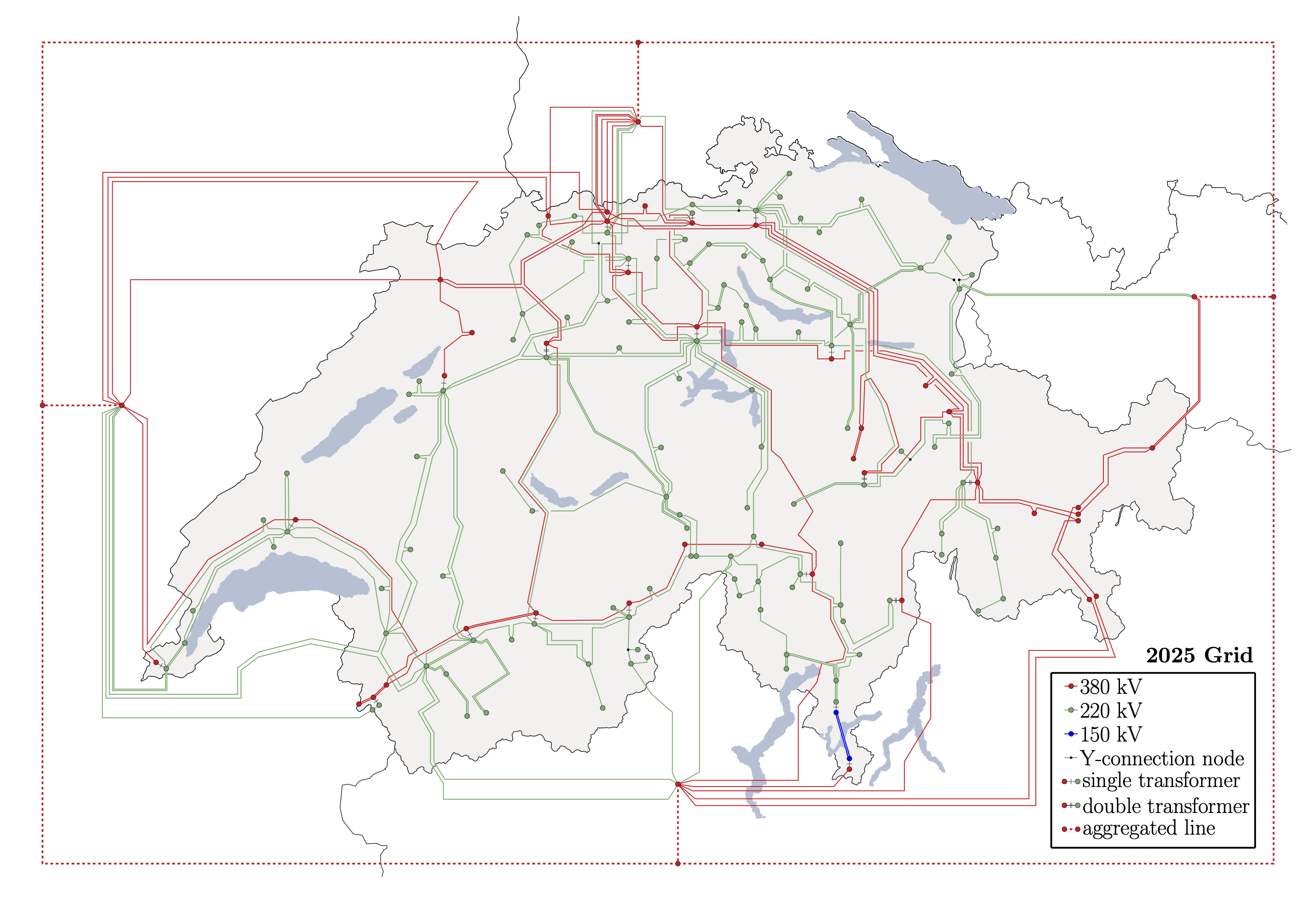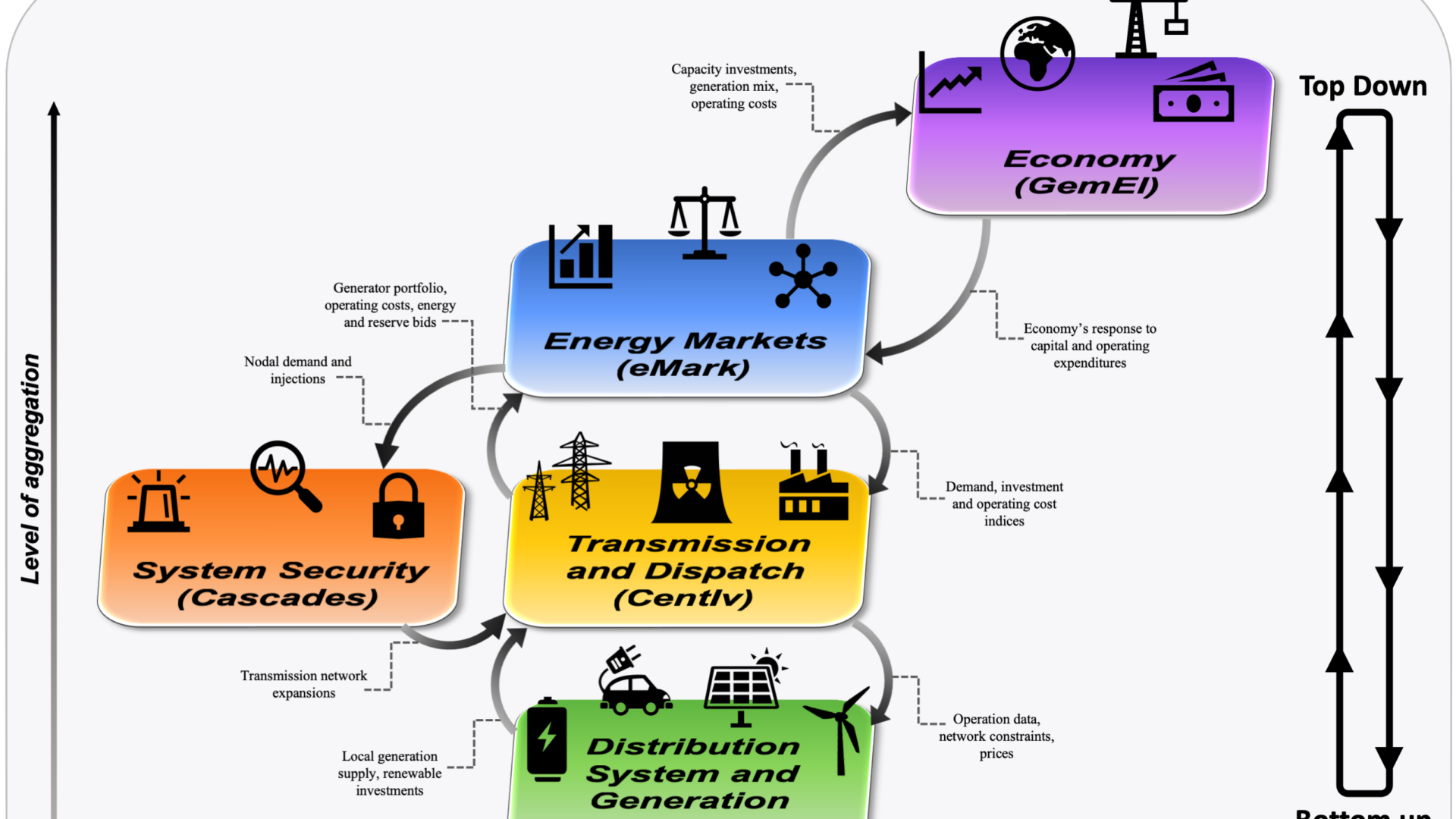Documentation
Detailed explanations on the individual modules and the framework
Individual module documentation
GemEl Module Documentation
The GemEl module is a computable general equilibrium (CGE) model of the whole economy. The purpose of the GemEl module is to provide reactions of economy-wide electricity demand to changes in the cost of supplying electricity. GemEl also estimate the impact of changes in the power sector on consumer welfare. It operates on an annual time scale.
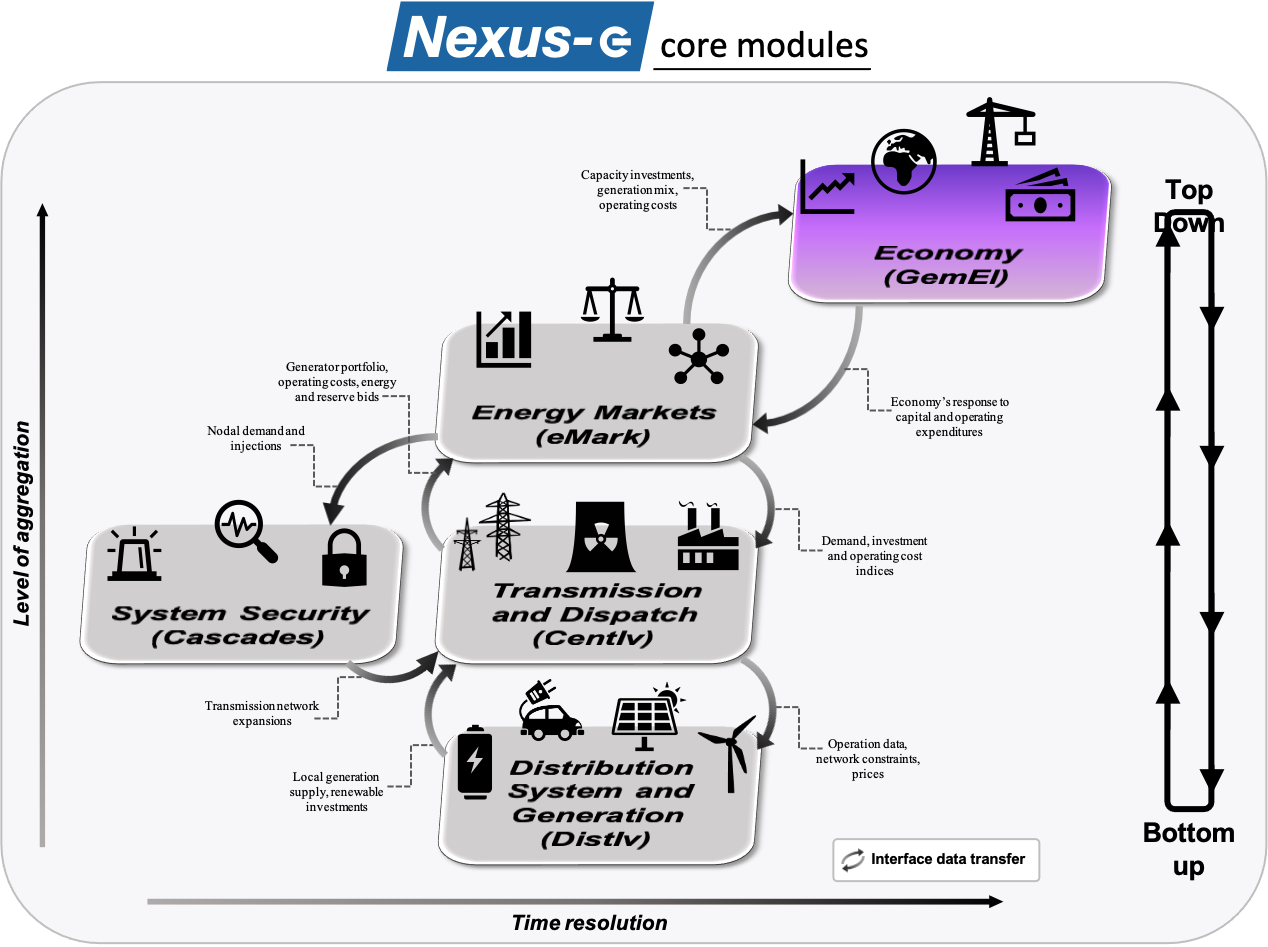
CentIv Module Documentation
The purpose of the CentIv module is to co-optimize generation investment and operational decisions on the transmission system level. The module provides results with high temporal (hourly) and spatial (nodal) resolution from the perspective of a centralized decision-maker.
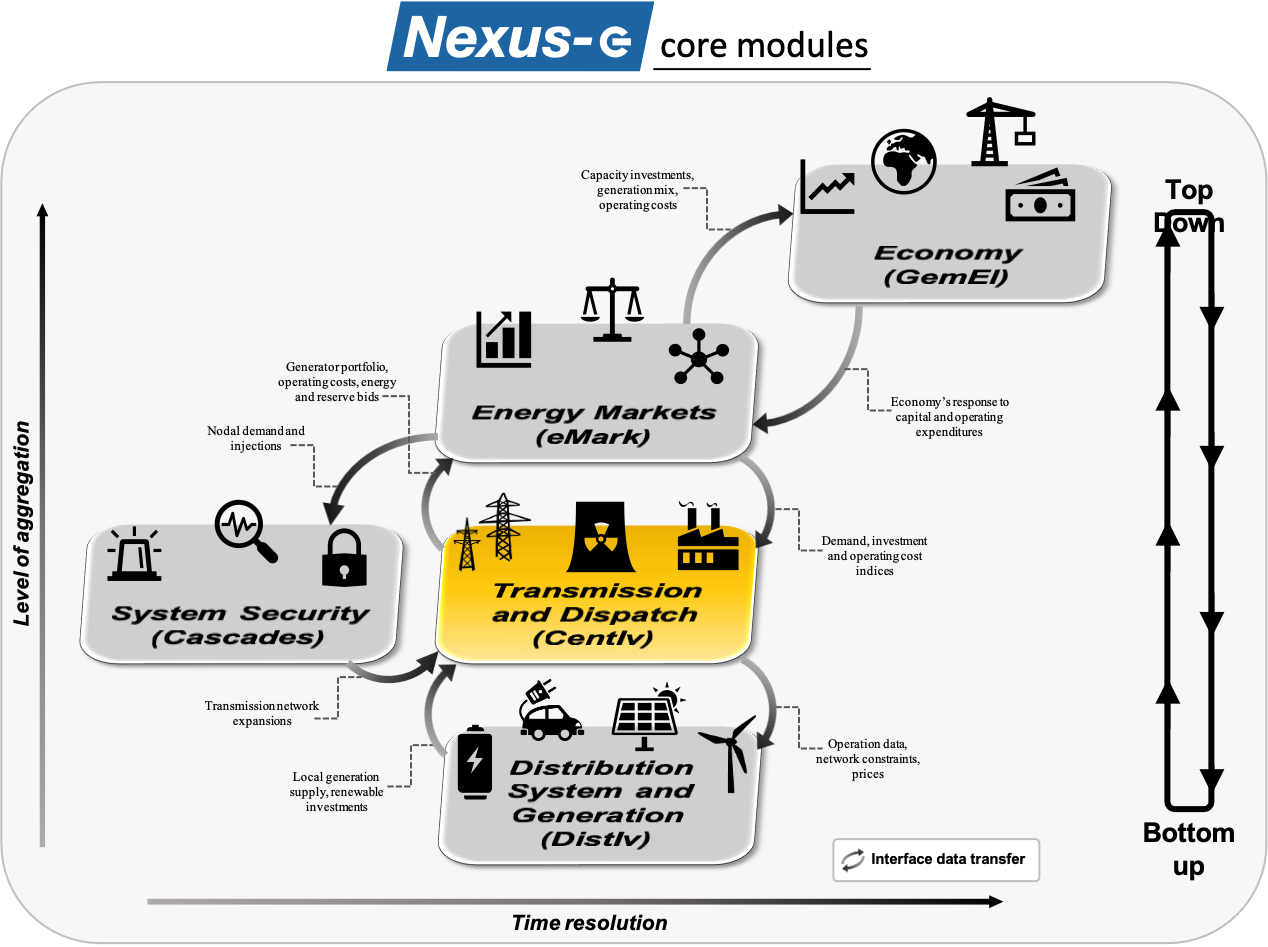
DistIv Module Documentation
The DistIv module co-optimizes the investment and operational decisions of distributed energy resources.
DistIv makes the trade-off between investing in local distributed energy resources and exchanging energy and reserves with the transmission grid, while minimizing the total costs.

eMark Module Documentation
The eMark module simulates a market-based clearing of supply offers and demand bids for both electricity and reserves. This module mimics the current sequential structures and timing employed to clear all electricity market products. Additionally, eMark applies constraints for intra-zonal trading that reflect the current market coupling mechanisms.
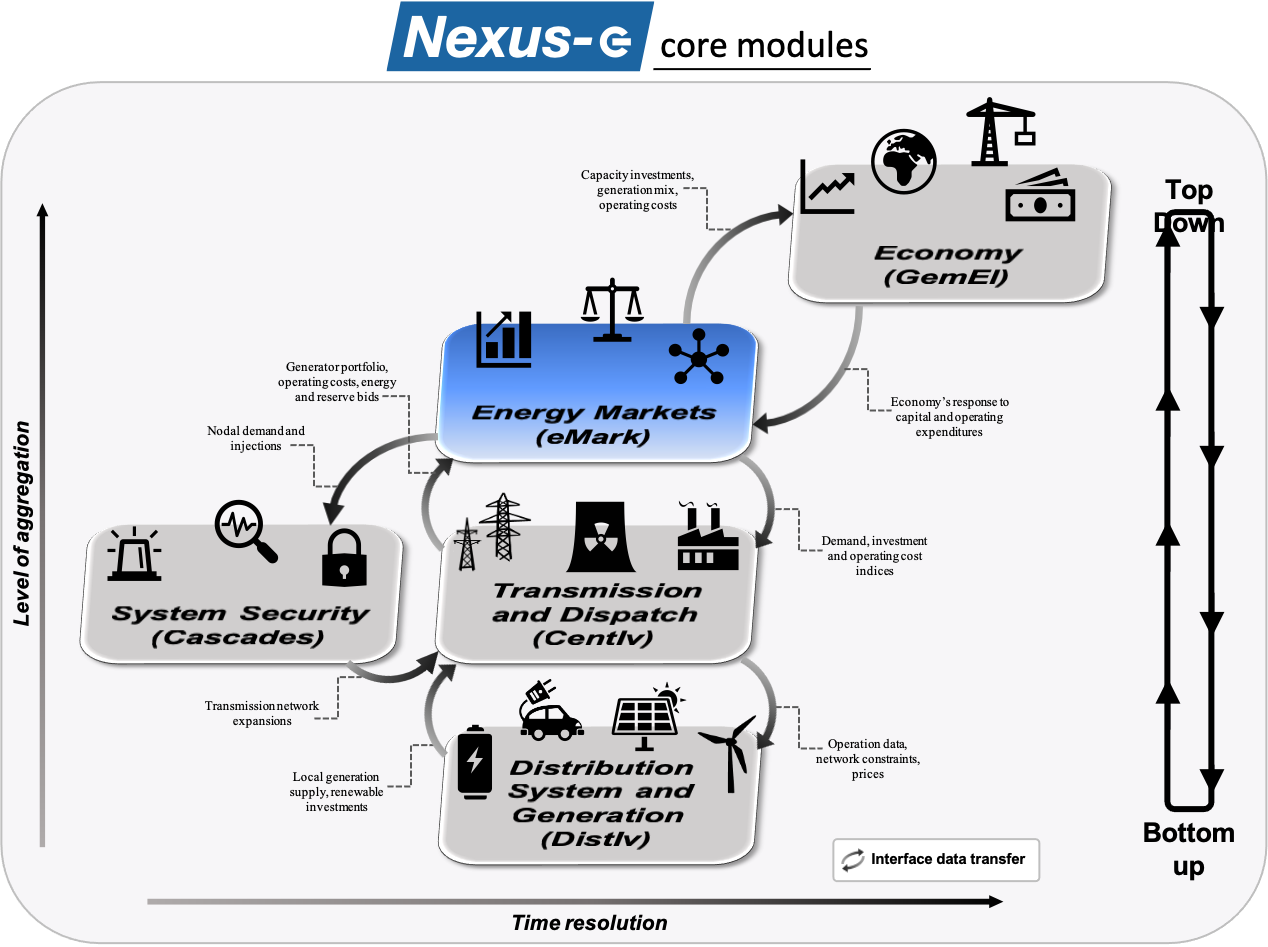
Cascades Module Documentation
The Cascades module comprises a cascading failure simulations model to assess the system security and a transmission system expansion planning model to provide a transmission system expansion plan if a target level of security is not satisfied.
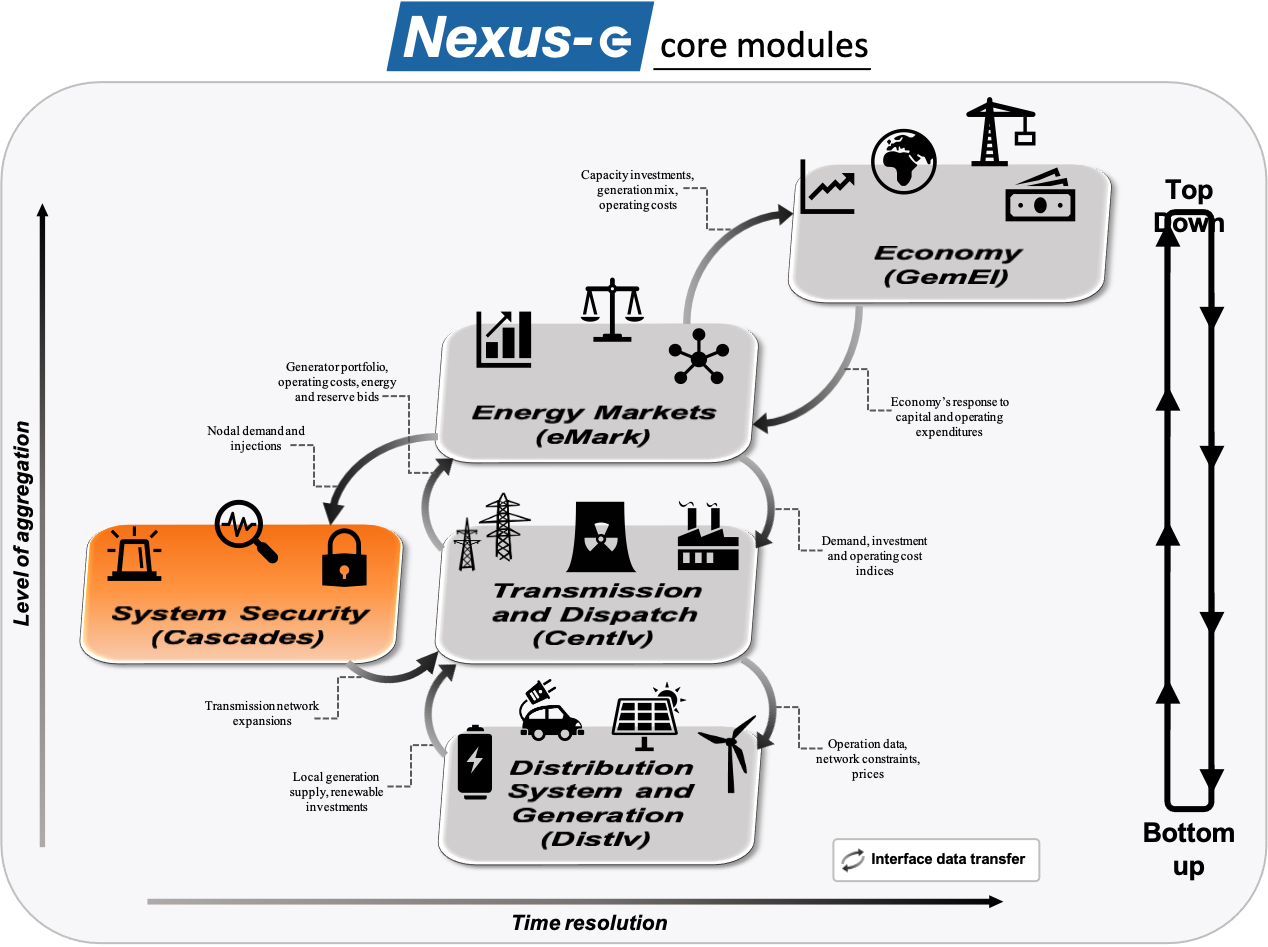
Overarching documentation
Simulation Framework and Interfaces
The Nexus-e platform relies on three convergence loops: Investments, Energy-Economic, and Security loop. Each of these loops hosts the interactions between modules through structured and automated interfaces. In this documentation, we describe the loops and interfaces.
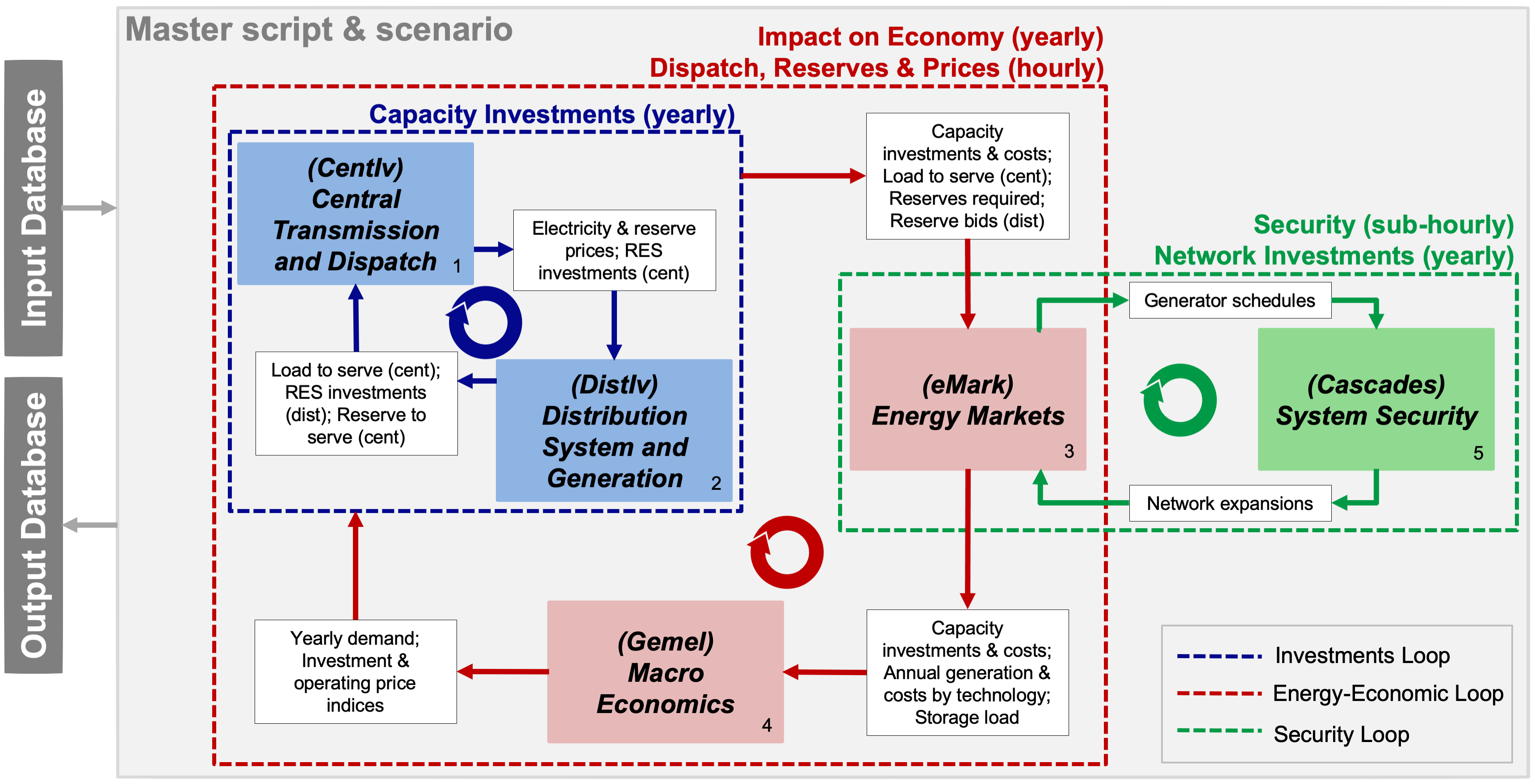
Validation and Calibration of Modules
The objectives of the validation and calibration are to develop trustworthy modules as well as to adjust the modules to better represent the complexity of the real systems and processes. In this documentation, we present the detailed methodology and results of the validation and calibration efforts of the Nexus-e modules.
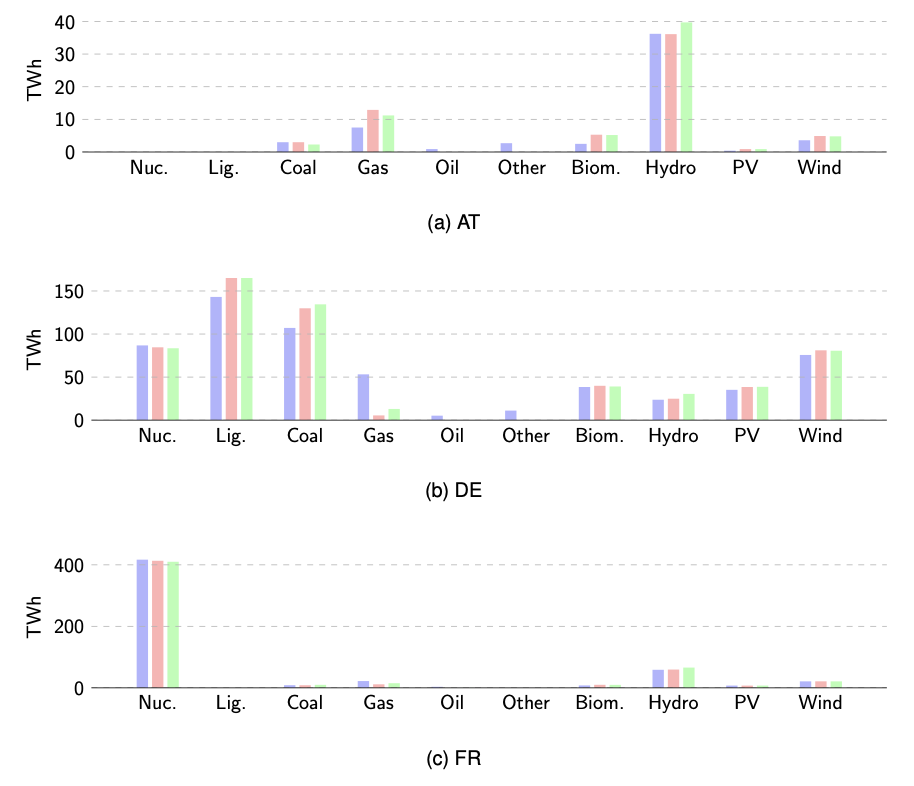
Input Data and System Setup
Nexus-e is applied to the Central European electric energy system, with the focus on Switzerland. The development of the generation mix in Switzerland’s neighbouring countries is an exogenous input. The Swiss electricity system is expected to go trough a major transformation because of the expected nuclear phase out.
